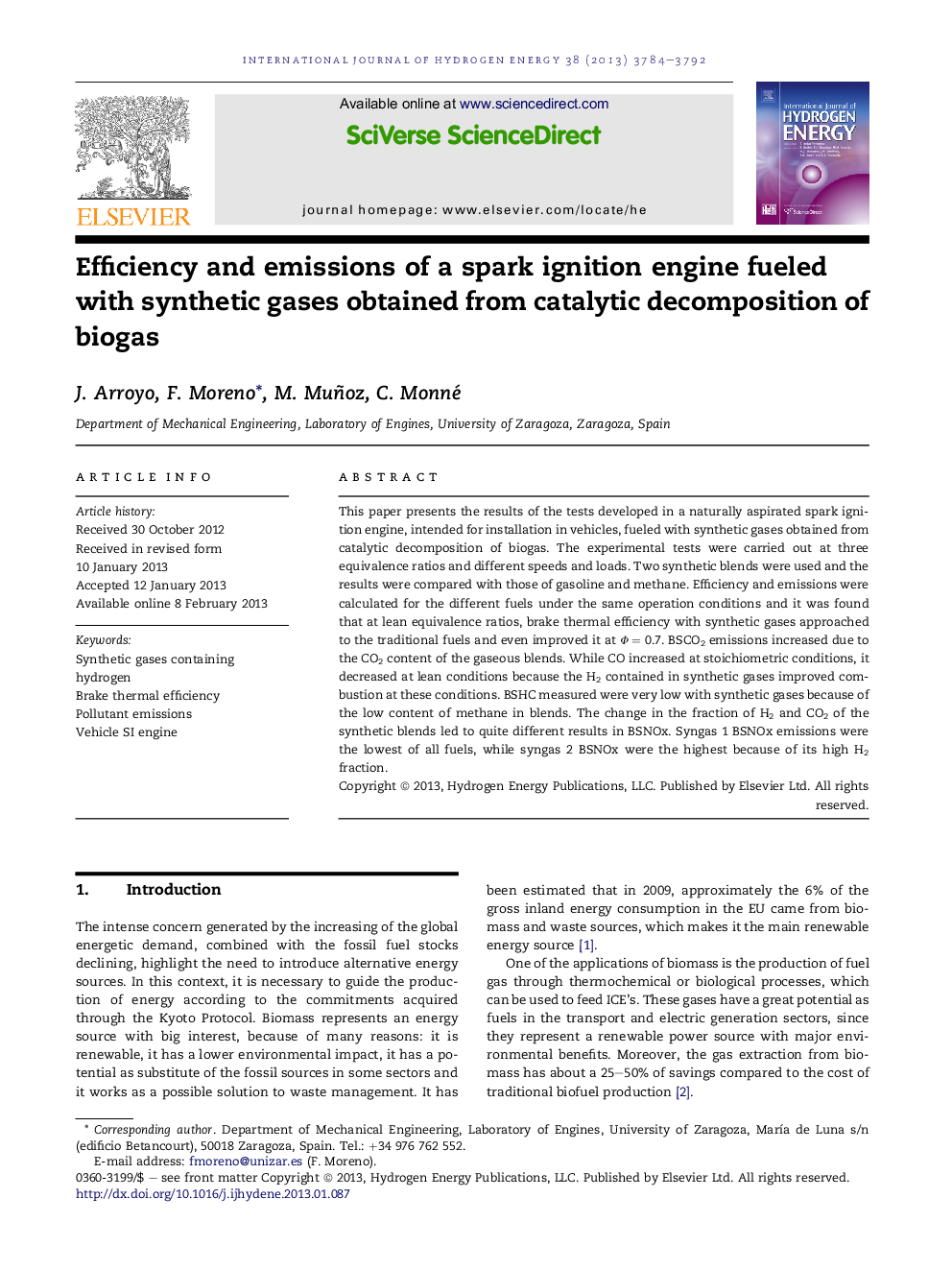| Article ID | Journal | Published Year | Pages | File Type |
|---|---|---|---|---|
| 1275598 | International Journal of Hydrogen Energy | 2013 | 9 Pages |
This paper presents the results of the tests developed in a naturally aspirated spark ignition engine, intended for installation in vehicles, fueled with synthetic gases obtained from catalytic decomposition of biogas. The experimental tests were carried out at three equivalence ratios and different speeds and loads. Two synthetic blends were used and the results were compared with those of gasoline and methane. Efficiency and emissions were calculated for the different fuels under the same operation conditions and it was found that at lean equivalence ratios, brake thermal efficiency with synthetic gases approached to the traditional fuels and even improved it at Φ = 0.7. BSCO2 emissions increased due to the CO2 content of the gaseous blends. While CO increased at stoichiometric conditions, it decreased at lean conditions because the H2 contained in synthetic gases improved combustion at these conditions. BSHC measured were very low with synthetic gases because of the low content of methane in blends. The change in the fraction of H2 and CO2 of the synthetic blends led to quite different results in BSNOx. Syngas 1 BSNOx emissions were the lowest of all fuels, while syngas 2 BSNOx were the highest because of its high H2 fraction.
► Synthetic gases containing hydrogen tested in a vehicle SI engine with a fixed ignition map. ► Results at full and partial load, equivalence ratios of 1, 0.85 and 0.7, compared with gasoline and methane. ► Improved BTE at lean equivalence ratios in the blends with more hydrogen content. ► Different results in emissions obtained in function of the composition.
